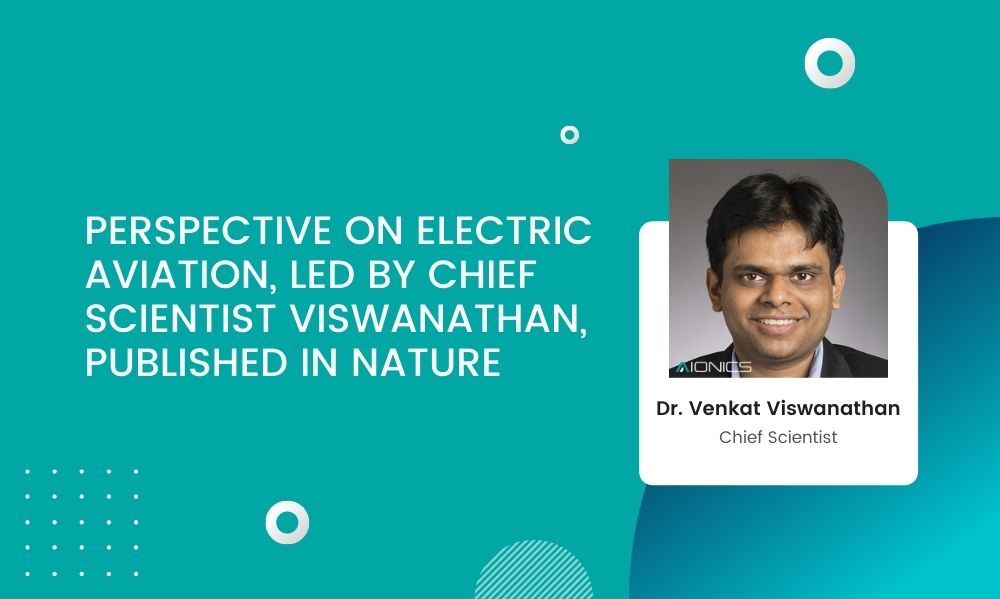Perspective on electric aviation, led by Chief Scientist Viswanathan, published in Nature
News

The prestigious scientific journal Nature has published a perspective article from an all-star group of scientists on the challenges and opportunities of battery-powered flight. The inclusion in Nature represents just how much electric aviation has elevated into the scientific and popular mainstream in recent years — while the article itself highlights how much work is yet to be done.
The analysis concludes that pack-level specific energies in excess of 400 Wh/kg are necessary for urban air mobility applications, while commuter aircraft demand at least three times this level. Battery packs of 600 Wh/kg could be commercialized by 2030 with adequate levels of support, the team states.
The co-authors are Venkat Viswanathan of CMU and battery materials company Aionics, Inc., Alan Epstein and Yet-Ming Chiang of MIT, Esther Takeuchi of Stony Brook University, Marty Bradley of USC, John Langford of electric aviation startup Electra.aero, and Michael Winter of aerospace manufacturer Pratt & Whitney.
According to lead author Viswanthan:
This work sets the foundations for decades-long efforts to come in developing batteries for electric aviation. The needs of aviation really challenge the battery scientist – we went back to the drawing board and asked the question of how to re-think. The promising avenue we identified is to try and make primary batteries rechargeable!
Taking new chemistry to market is time-consuming and difficult. We point out three things that hold great promise:
(i) Characterization, the ability to watch the failure mechanisms,
(ii) Robotic experimentation, ability to rapidly test a vast number of candidates
(iii) Rachine learning for materials discovery and optimization, ability to accelerate the innovation process by eliminating the number of iteration cycles.
Newsletter Registration
Subscribe to our newsletter and stay updated with the latest from Aionics.


